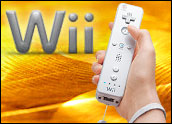
In the take-no-prisoners environment of the video game console industry, Nintendo was not so long ago considered an also-ran. The video game console pioneer and one-time market leader had been outmaneuvered and outsold by video game juggernaut Sony and even upstart entrant Microsoft, as their respective PlayStation and Xbox platforms made Nintendo’s offerings look like children’s toys in comparison.
However, Nintendo has come back strong in the current generation of gaming consoles with the Wii. It has outsold Sony’s PlayStation 3 (PS3) and Microsoft’s Xbox 360 by a significant margin in every market from the U.S. to Europe to Japan.
At a certain point, success or failure becomes a self-fulfilling prophesy — and at this point, no one is going to pull ahead of the Wii, said Michael Goodman, an independent gaming and digital media analyst.
“Nintendo is so far ahead, no one is going to catch up to them. It’s a battle for second place. The bottom line is that at the start of any generation, it’s anybody’s game, and Sony really blew it coming out of the gate. They were overpriced. They had no games. It was just a console that no one wanted,” he told the E-Commerce Times.
How did Nintendo go from zero to hero in less than a decade? It was, in essence, the decision for the company to stick with what it knew from its 20 years in the business and what it had always done: creating a platform that would appeal to gamers from the very young to the very old.
Leading the Way
Up against Sony and Microsoft consoles that offered gamers a more technologically advanced gaming system and appealed to the core demographic of hardcore gamers — young males — Nintendo at one point found itself quickly pushed from first place to third in a market that it had owned since the 1985 U.S. release of its first console, the Nintendo Entertainment System (NES).
Sold for US$199 — the equivalent of about $400 today — the bundled NES, along with a competing console from Sega, helped further lay the foundation for the console market created by Atari and its Atari 2600 platform.
The NES offered game play that was much more graphically advanced than earlier systems from Atari. In an inspired move, Nintendo bundled the console with what would become one of the best-selling video game franchises ever, “Super Mario Bros.” Consumers responded well to the bundling and eventually purchased nearly 62 million units of the NES worldwide. In fact, the NES is credited with helping to revitalize the flagging video game industry in the U.S. after the industry suffered a crash in 1983.
Nintendo’s follow-up, 1990’s Super Nintendo Entertainment System (SNES), was another hit, selling more than 49 million units.
A leader in the so-called golden age of video games, the SNES marked the start of Nintendo’s focus on game play rather than graphics and other technical wizardry.
This concentration on the game itself rather than the creation of a console with all the latest technological bells and whistles would become the company’s guiding ethos in future generations. That philosophy perhaps also contributed to its loss of the alpha position among gaming consoles.
Start of the Slide
Released in September of 1996, the Nintendo 64 (N64), which contained a 64-bit graphics processing unit (GPU), was part of the fifth generation of video game consoles. Its cohorts were Sega’s Saturn, launched in May of 1995, and Sony’s PlayStation (PS) platform, released in December of 1994.
Technologically, the N64 trailed the Saturn and PS — it used cartridges, whereas the other two consoles stored games on compact discs. However, that did not stop the console from selling some 500,000 units in the first four months on its way to total worldwide sales of just fewer than 33 million consoles.
Game titles including “Donkey Kong Country” and “Super Mario 64,” along with the first controller to include an analog stick, helped sales. However, it was Sony that came out on top in this generation; PS sales topped 102 million units.
The start of Nintendo’s slide from market leader is attributed in part to the console’s continued use of ROM cartridges, which were sometimes a hindrance to game play. CDs offered much more memory and were less expensive.
The irony for Nintendo is that the PS was born from a defunct partnership between Nintendo and Sony, which sought to create an add-on CD accessory for the SNES.
The company’s missteps continued into another generation. Released in November 2001, the Nintendo GameCube sold a scant 21.74 million units worldwide. Its rivals were the PlayStation 2 (PS2), launched in October of 2000, and the Xbox, released in November of 2001. In this class, Sony had the clear winner: The PS2 has sold some 140 million units to date, and it’s still in stores. The Xbox sold 24 million units by May 2006.
With the GameCube, Nintendo had finally moved from cartridges to discs. However, its competition had moved on as well. GameCube titles were stored on 8-centimeter optical discs; PS2 and Xbox games came on standard-sized DVD-ROM discs. Adding to the GameCube’s marketing woes was the “family-friendly” strategy. Launch titles included “Luigi’s Mansion,” “Super Monkey Ball,” and “Disney’s Tarzan Untamed,” none of which resonated greatly with the hardcore gamers attracted to Sony and Microsoft.
The rise of first-person shooters and the breakthrough “Grand Theft Auto III” led gamers to forgo the GameCube in favor of the PS2, Sega Dreamcast and Xbox, which had built-in online capabilities.
Designing a Revolution
However, by the time the GameCube hit store shelves in 2001, Nintendo had already begun development on the Wii, originally codenamed “Revolution.”
“They rethought the system and took it back to more of what the original Atari focused on — games that are shared or play well in living rooms rather than bedrooms,” Rob Enderle, principal analyst at the Enderle Group, told the E-Commerce Times.
“The original name for the Wii was the ‘Revolution’ because Nintendo intended to do something revolutionary: appeal to all, instead of focusing solely on the hardcore,” Michael Pachter, a Wedbush Morgan analyst, told the E-Commerce Times.
However, “Wii” reflected the company’s goal to build a system that would attract a variety of consumers. The two lowercase i’s are meant to visually represent two people standing side by side playing the game. Easily remembered, it’s also easy for people to say, no matter their native language.
“The PS3 and the Wii are going after everyone, but the key difference at the outset was price, with the Wii launching at $250 and the PS3 at $600. That was too great a difference to attract any but the most hardcore fans. The Wii gained an advantage because of its differentiated controller and hasn’t looked back. The number of games is not as much of a differentiator as price or ‘fun factor,'” Pachter said.
Click here to be notified when the nextinstallment in this series is published.


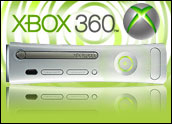

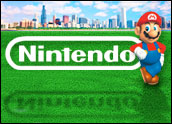


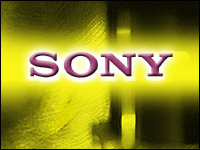



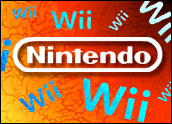

































Social Media
See all Social Media